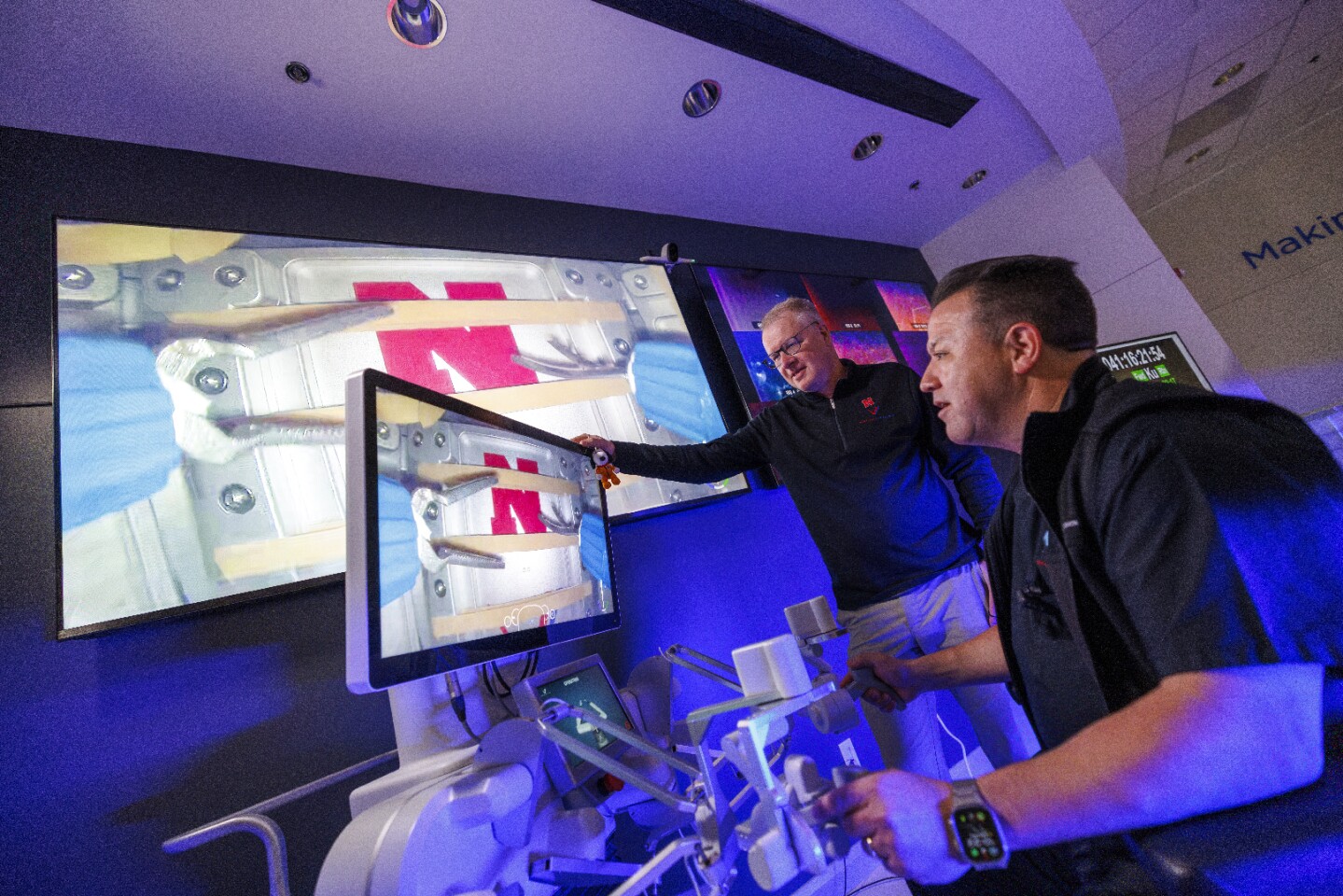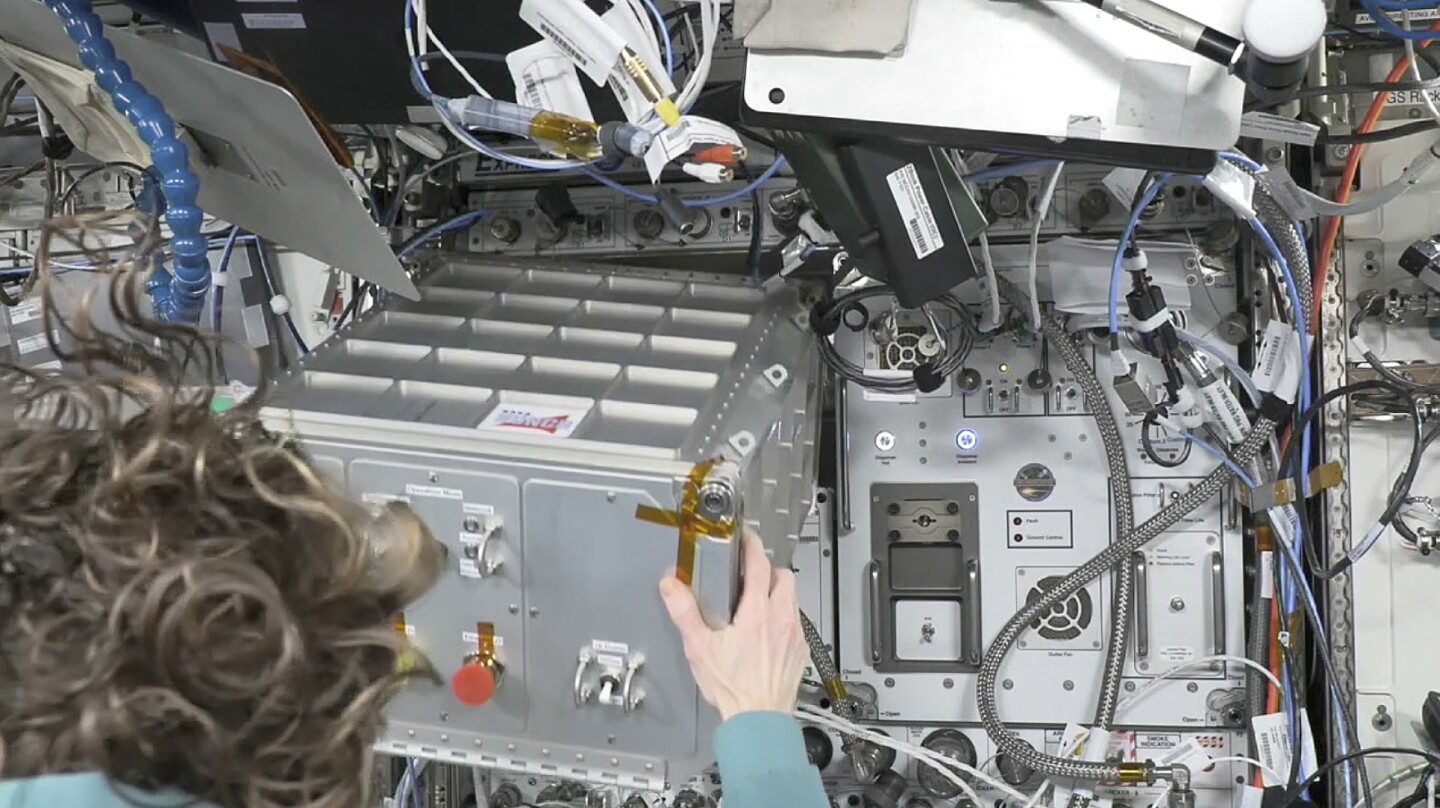Earthbound doctors successfully operate surgical robot in space
Six doctors in Nebraska have successfully operated a surgical robot aboard the ISS. This time, the operation was on only rubber bands, but the milestone could have meaning for future missions to Mars or for rural operating rooms here on Earth.
Earlier this year, a robotic surgical arm known as spaceMIRA (miniaturized in vivo robotic assistant) traveled to the International Space Station (ISS) aboard a SpaceX rocket. The arm was developed in a partnership between the University of Nebraska-Lincoln (UNL) and a private company called Virtual Incision. Now, that piece of equipment has been unpacked and put to use as doctors here on terra firma operated the arm remotely to carry out a series of slicing and grabbing maneuvers meant to simulate surgery on human tissue.
The arm measures about 30 in (76 cm) long and weighs about 2 lbs (0.9 kg). It is housed in a box about the size of a microwave, which is where the testing was carried out. An inbuilt camera allowed surgeons to operate the arm to grab and then slice through 10 different rubber bands, which were a stand-in for human tissue.
NASA
The surgeons conducted the testing at the Lincoln, Nebraska, headquarters of Virtual Incision, and mission control was handled through NASA’s Payload Operations Center at Marshall Space Flight Center in Huntsville, Alabama. Six surgeons had a go at operating the arm in a testing period that lasted about two hours.
All of the participants successfully completed the task despite a latency factor of between 0.5 to 0.75 of a second. To compensate for that latency, the researchers tested out different scaling factors so that, for example, larger movements on Earth would result in smaller movements aboard the ISS.
“You have to wait a little bit for the movement to happen, it’s definitely slower movements than you’re used to in the operating room,” said Michael Jobst, a Lincoln-based colorectal surgeon, who was the first to operate the controls. Jobst has previously used a terrestrial version of the robotic arm, known simply as MIRA, to successfully remove part of a patient’s colon here on Earth.

Craig Chandler, UNL Communication and Marketing
Not only did the surgeons have to use precision to make a total of 20 cuts in the front and back of the rubber bands, but they also had to take care to not bump the arm against its casing. Doing so could have caused it to break and send debris into the ISS, which could potentially be disastrous.
The successful test not only bodes well for the possibility of space surgery on longer missions, such as those to Mars, but the UNL team says it could help doctors carry out operations here on Earth in remote areas that might not have access to onsite surgical teams.
“SpaceMIRA’s success at a space station orbiting 250 miles above Earth indicates how useful it can be for health care facilities on the ground,” said Shane Farritor, the UNL professor and Virtual Incision co-founder who led spaceMIRA’s development.
“The experiment was deemed a huge success by all surgeons and researchers, and there were little to no hiccups,” said Virtual Incision in a statement. The company added that the advance is set to “change the future of surgery.”
Sources: University of Nebraska-Lincoln, AFP via Phys.org
Six doctors in Nebraska have successfully operated a surgical robot aboard the ISS. This time, the operation was on only rubber bands, but the milestone could have meaning for future missions to Mars or for rural operating rooms here on Earth.
Earlier this year, a robotic surgical arm known as spaceMIRA (miniaturized in vivo robotic assistant) traveled to the International Space Station (ISS) aboard a SpaceX rocket. The arm was developed in a partnership between the University of Nebraska-Lincoln (UNL) and a private company called Virtual Incision. Now, that piece of equipment has been unpacked and put to use as doctors here on terra firma operated the arm remotely to carry out a series of slicing and grabbing maneuvers meant to simulate surgery on human tissue.
The arm measures about 30 in (76 cm) long and weighs about 2 lbs (0.9 kg). It is housed in a box about the size of a microwave, which is where the testing was carried out. An inbuilt camera allowed surgeons to operate the arm to grab and then slice through 10 different rubber bands, which were a stand-in for human tissue.

NASA
The surgeons conducted the testing at the Lincoln, Nebraska, headquarters of Virtual Incision, and mission control was handled through NASA’s Payload Operations Center at Marshall Space Flight Center in Huntsville, Alabama. Six surgeons had a go at operating the arm in a testing period that lasted about two hours.
All of the participants successfully completed the task despite a latency factor of between 0.5 to 0.75 of a second. To compensate for that latency, the researchers tested out different scaling factors so that, for example, larger movements on Earth would result in smaller movements aboard the ISS.
“You have to wait a little bit for the movement to happen, it’s definitely slower movements than you’re used to in the operating room,” said Michael Jobst, a Lincoln-based colorectal surgeon, who was the first to operate the controls. Jobst has previously used a terrestrial version of the robotic arm, known simply as MIRA, to successfully remove part of a patient’s colon here on Earth.

Craig Chandler, UNL Communication and Marketing
Not only did the surgeons have to use precision to make a total of 20 cuts in the front and back of the rubber bands, but they also had to take care to not bump the arm against its casing. Doing so could have caused it to break and send debris into the ISS, which could potentially be disastrous.
The successful test not only bodes well for the possibility of space surgery on longer missions, such as those to Mars, but the UNL team says it could help doctors carry out operations here on Earth in remote areas that might not have access to onsite surgical teams.
“SpaceMIRA’s success at a space station orbiting 250 miles above Earth indicates how useful it can be for health care facilities on the ground,” said Shane Farritor, the UNL professor and Virtual Incision co-founder who led spaceMIRA’s development.
“The experiment was deemed a huge success by all surgeons and researchers, and there were little to no hiccups,” said Virtual Incision in a statement. The company added that the advance is set to “change the future of surgery.”
Sources: University of Nebraska-Lincoln, AFP via Phys.org
